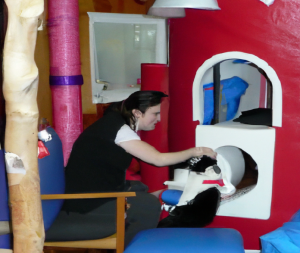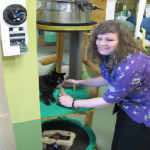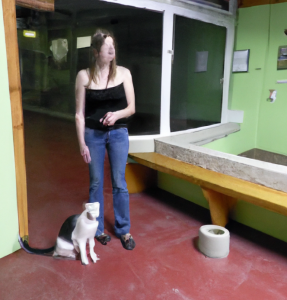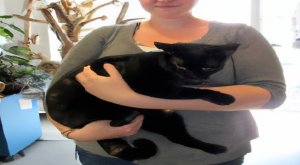
Cat Allergy Symptoms to Look Out
We have three beloved cats of our own and are proud owners, so we have personally experienced the happiness that pets bring into our life. But we also recognize that having a pet might present difficulties, as some of our visitors experience throughout their visits. This revelation ignited a strong desire inside us to design a space that prioritizes each visitor’s well-being as well as their comfort, whether they are furry pals or not.
We think that the secret to encouraging a peaceful coexistence between allergy sufferers and pet owners is education. We want to improve the quality of our guests’ stay by providing them with knowledge about identifying and treating allergy symptoms. This way, everyone will be able to experience the pleasure and peace that our northern pet hotel has to offer, without sacrificing anything.

Sneezing and runny nose
The last thing you want is an allergy to ruin your cozy stay at a northern pet hotel, where you’re surrounded by the peaceful beauty of the surroundings and the warmth of three amiable cats. Often, the first obvious indications that you could be responding to your furry buddies are sneezing and a runny nose. Not only are they discomforting, but they represent your body’s first line of defense against an intruder, in this instance, cat dander.
Cat dander, which is made up of small skin flakes that cats shed, as well as their urine and saliva, includes proteins that might cause allergic reactions in some people. These particles have the potential to enter the air and come into contact with the nasal lining via inhalation. In this instance, the body launches a defense by mistaking these benign proteins for dangerous ones. The immune system produces antibodies in response to this reaction in order to combat the perceived danger.



Histamine is released by skin, lung, and nasal passage cells as part of an immunological response chain reaction triggered by the contact between these antibodies and the proteins. Histamine is the chemical that causes blood vessels to dilate and increases the permeability of blood vessel walls to certain proteins and white blood cells. This procedure aids in the body’s defense against what it perceives to be an illness, but it also results in runny nose, sneezing, and itching—all of which are the body’s efforts to remove allergens.
Controlling the environment is essential for treating these symptoms, particularly in places intended to be a refuge for both humans and dogs. Techniques include routine cleaning to minimize dander buildup, and the use of HEPA-filtered air purifiers may greatly decrease allergy exposure. Establishing pet-free zones may provide a much-needed haven from symptoms for individuals who are especially sensitive, enabling visitors to enjoy their stay without having to constantly deal with sneezes or grab for a tissue box.
Itchy, red, or watery eyes
Cat exposure often causes irritation in the eyes, which might show up as itching, redness, or excessive tears. When allergenic proteins, which are present in cat dander, saliva, and even hair, come into contact with the eye, symptoms like these manifest. When these allergens attach to antibodies on the surface of the conjunctiva, a thin membrane covering the white area of the eye and the inner eyelids, an immune response like that which occurs in the nasal passages is triggered. This results in inflammation of the conjunctiva.
Redness and swelling are brought on by the dilatation of blood vessels caused by the release of histamine and other mediators in the tissues of the eyes. Additionally, histamine causes itching by stimulating nerve endings. The body is trying to get rid of or protect itself from what it perceives to be an allergy danger by going through this series of responses. Watery eyes, or excessive tear production, are the body’s natural defense mechanism against these irritants.
Visitors in settings where cats are prevalent may control these symptoms by taking a few easy preventative steps. For example, minimizing the transmission of allergens may be achieved by not touching the eyes after handling animals. Additionally, using air purifiers in residential areas helps lessen allergies and other airborne dander. Keeping dogs groomed and keeping their living spaces clean on a regular basis may also greatly reduce the number of allergies.
Informing visitors of these doable actions not only improves their stay but also shows how committed a business is to its patrons’ welfare. Providing outstanding hospitality and taking into account the requirements of visitors with allergies go hand in hand, guaranteeing that every visitor, no matter how sensitive, has a great time throughout their stay.
Skin Reactions: Hives or Eczema
Skin responses like hives (urticaria) or eczema (atopic dermatitis) are among the less talked-about but no less bothersome symptoms of cat allergies. When allergens touch the skin directly or are exposed to its surface by hand-transferred particles, several responses take place. Skin responses might take longer to manifest and may last longer than other allergy reactions, which happen right away.
Raised, red, and itchy welts on the skin’s surface are the hallmark of hives. They develop as a result of blood vessels leaking fluid into the epidermis due to the release of histamine and other substances into the skin. In contrast, eczema causes dry, itchy, and irritated patches that, over time, may break and become severe. Both disorders are brought on by the immune system of the body responding to benign chemicals, like cat dander, and mistaking them for harmful intruders.
Reducing direct contact with allergens and calming the skin are the main goals of managing these disorders. This might include putting on protective clothes while handling dogs, using hypoallergenic bedding and furniture coverings, and developing strict handwashing practices. Furthermore, minimizing the presence of allergens that cause these responses may be achieved by maintaining a clean environment through routine cleaning and vacuuming.
The quality of stay for people impacted by allergies may be greatly improved by pet-friendly lodgings that proactively address these issues by providing allergy-friendly rooms or locations and educating visitors on managing allergies.

Difficulty breathing or asthma attacks
When cats are around, those who are sensitive to them may have more severe respiratory problems, such as breathing difficulties or even asthma attacks. This heightened reaction happens when allergens cause the airways to swell and constrict, greatly limiting airflow and making breathing difficult. Breathing difficulties may also be exacerbated by bronchospasm, a disease in which the muscles around the airways contract.
Cat allergens may cause the immune system to produce mucus in the airways, which further obstructs airflow and adds to the wheezing and shortness of breath that are typical symptoms of asthma. These symptoms may be more severe for people who already have respiratory issues, so it’s important to manage their surroundings carefully to reduce exposure to possible triggers.
Airborne allergens may be greatly reduced by putting solutions in place, such as air purifiers and HVAC systems with high-efficiency particulate air (HEPA) filters. Using bedding that is resistant to allergens and making sure dogs are kept out of sleeping places may also be helpful. Pet-friendly lodgings may help visitors even more by giving them information about nearby pharmacies and medical facilities in case they run into any unanticipated respiratory issues while there.
By implementing such steps, lodging facilities show that they have a thorough awareness of the various demands of their customers, in addition to providing a safer and more pleasant stay for those with respiratory sensitivities.


Persistent coughing or wheezing
Guests reacting to cat allergies often experience persistent coughing and wheezing, which is a reflexive response to cleanse the airways of irritants. The cough, which is often dry and ineffective, may be especially bothersome at night and negatively impact both sleep and general health. When allergens are present, wheezing—a high-pitched whistling sound produced when breathing—indicates that there is an obstruction in the airways.
The immune system’s reaction to cat dander, saliva, or urine causes inflammation and airway constriction, which results in these symptoms. When these allergens are present, the body may produce more mucus, which will further impede airflow and cause a constriction in the chest. This may cause coughing as the body tries to remove the blockages.
Reducing exposure to allergens via routine cleaning and air filtration is the first step in mitigating these symptoms. By keeping their dogs well-groomed and limiting their access to certain places, particularly where visitors sleep or spend a lot of time, pet owners and lodgings may reduce the spread of pet dander. Thorough room ventilation and the use of HEPA-filtering air purifiers may also aid in removing allergic particles from the air, relieving chronic wheezing and coughing.
In order to reassure visitors with sensitivity, pet-friendly hotels should provide clear and detailed guidance on how the environment is maintained to limit allergy exposure. For more expert insights, visit medical blog run by experienced doctors.
Take a look at other post:

















